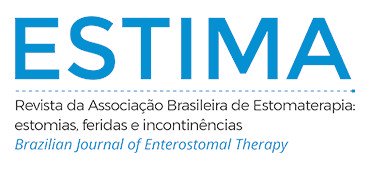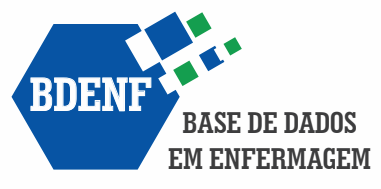Interprofessional strengths and weaknesses in the care of people with ostomies: a mixed-methods study
Abstract
Objective: To analyze the activities of a secondary care team specialized in assisting individuals with elimination stomas, interpreting the distances and proximities with interprofessionality. Method: A mixed-method study conducted in a service for people with stomas in northern Brazil, involving 16 professionals. The descriptive qualitative phase was based on Émile Durkheim’s Social Facts, and utilized semi-structured interviews and field notes with reflective thematic analysis. The quantitative phase used a questionnaire survey designed by experts and descriptive percentage analysis. Results: A total of 31 activities were described, with low expressiveness of those that foster interprofessionality, such as reception, checking family dynamics, education in the waiting room, active search for vulnerable patients’ records, scheduling follow-up with social services, reviewing family dynamics, and addressing patients’ rights. Two topics were developed: (1) Operational aspects of (search for) interprofessionality: registration, management, active search, and referrals; and (2) Acquiring autonomy for social reintegration and moving away from self-care: collaborative elements in the journey from beginning to “restart”. Conclusion: Interprofessionality remains a distant work model; however, collaborative practices have begun to emerge through referrals. Emphasis on intersectionality and intersectorality is crucial to support the social reintegration of patients.
Downloads
Metrics
References
Barbosa AS, Teixeira BRF, Oliveira AM, Pessoa TRRF, Vaz EMC, Forte FDS. Inteprofissionalidade, formação e trabalho colaboratico no contexto da saúde da família: pesquisa-ação. Saúde Debate. 2023;46(spe5):67-79. https://doi.org/10.1590/0103-11042022E506
Brasil. Ministério da Saúde. Secretaria de Atenção à Saúde. Portaria no 400, de 16 de novembro de 2009. Estabelece Diretrizes Nacionais para a Atenção à Saúde das Pessoas Ostomizadas no âmbito do Sistema Único de Saúde – SUS, a serem observadas em todas as unidades federadas, respeitadas as competências das três esferas de gestão [Internet]. 2009 [citado 2024 Nov. 1]. Disponível em: https://bvsms.saude.gov.br/bvs/saudelegis/sas/2009/prt0400_16_11_2009.html
Klein GT, Ajay D, Volk RJ, Leal V, Westney OL. Living with urinary diversions: patient insights to improve the perioperative experience. Urology. 2021;152:190-4. https://doi.org/10.1016/j.urology.2021.01.009
Maurício VC, Souza NVDO, Maurício CE, Costa CCP, Silva MS, Roque ABM. Dificuldades e facilidades do processo educativo desenvolvido por enfermeiros às pessoas com estomias. Rev Enferm UERJ. 2020;28:e46131. https://doi.org/10.12957/reuerj.2020.46131
Hirose M, Creswell JW. Applying core quality criteria of mixed methods research to an empirical study. J Mix Methods Res. 2023;17(1):12-28. https://doi.org/10.1177/15586898221086346
Souza VRS, Marziale MHP, Silva GTR, Nascimento PL. Tradução e validação para a língua portuguesa e avaliação do guia COREQ. Acta Paul Enferm. 2021;34:eAPE02631. https://doi.org/10.37689/acta-ape/2021AO02631
Durkheim E. Lições de sociologia. 3a ed. São Paulo: WMF Martins Fontes; 2019.
Batista BF, Rodrigues D, Moreira EV, Silva F. Técnicas de recolha de dados em investigação: inquirir por questionário e/ou inquirir por entrevista. In: Sá P, Costa AP, Moreira A. Reflexões em torno de metodologias de investigação: recolha de dados. 2a ed. 2021. p. 13-36. https://doi.org/10.34624/ka02-fq42
Cachado R. Filednotes. A different cousin in the social sciences family. Sociol Antropol. 2021;11(2):551-72. https://doi.org/10.1590/2238-38752021v1128
Braun V, Clarke V. Reflecting on reflexive thematic analysis. Qual Res Sport Exerc Health. 2019;11(4):589-97. https://doi.org/10.1080/2159676X.2019.1628806
Ribeiro AA, Giviziez CR, Coimbra EAR, Santos JDD, Pontes JEM, Luz NF, et al. Interprofessional collaboration in primary health care: the team’s intentions versus the reality of work processes. Esc Anna Nery. 2021;26:e20210141. https://doi.org/10.1590/2177-9465-EAN-2021-0141
Acero L. Relações ‘biossociais’: as associações de pacientes e a medicina regenerativa no Brasil. Rev Tecnol Soc. 2022;18(51):43-58. https://doi.org/10.3895/rts.v18n51.13998
Erdmann AL, Andrade SR, Mello ALSF, Drago LC. Secondary health care: best practices in the health services network. Rev Lat Am Enfermagem. 2013;21:131-9. https://doi.org/10.1590/S0104-11692013000700017
Guedes BAP, Vale FLB, Souza RW, Costa MKA, Batista SR. The organization of secondary outpatient care at SHS-DF. Cienc Saude Colet. 2019;24(6):2125-34. https://doi.org/10.1590/1413-81232018246.08632019
D’Ambrosio F, Pappalardo C, Scardigno A, Maida A, Ricciardi R, Calabrò GE. Peristomal skin complications in ileostomy and colostomy patients: what we need to know from a public health perspective. Int J Environ Res Public Health. 2022;20(1):79. https://doi.org/10.3390/ijerph20010079
Down G, Bain K, Andersen BD, Martins L, Karlsmark T, Jemec G, et al. Clinical preventive-based best practices to reduce the risk of peristomal skin complications: an international consensus report. WCET Journal. 2023;43(1):11-9. https://doi.org/10.33235/wcet.43.1.11-19
Ferreira MG, Ferreira KHG, Souza CRP, Ortiz PCA, Almeida RGS, Silva ADM. Singular Therapeutic Project in the management of complex cases: experience report in PEW-Health Interprofessionality. Rev Bras Educ Med. 2022;46(1):e026. https://doi.org/10.1590/1981-5271v46.1-20210260.ING
Zhou J, Wang Z, Chen X, Li Y. Gender differences in psychosocial outcomes and coping strategies of patients with colorectal cancer: a systematic review. Healthcare (Basel). 2023;11(18):2591. https://doi.org/10.3390/healthcare11182591
Beco G. Intersectionality and disability in international human rights law. Int J Hum Rights. 2020;24(5):593-614. https://doi.org/10.1080/13642987.2019.1661241
Wickenden M. Disability and other identities? How do they intersect? Front Rehabil Sci. 2023;4:1200386. https://doi.org/10.3389/fresc.2023.1200386
Clemente KAP, Silva SV, Vieira GI, Bortoli MC, Toma TS, Ramos VD, et al. Barreiras ao acesso das pessoas com deficiência aos serviços de saúde: uma revisão de escopo. Rev Saude Publica. 2022;56:64. https://doi.org/10.11606/s1518 8787.2022056003893
Ceccim RB, Prates CC. Educação interprofissional, práticas colaborativas e micropolítica: o combate incerto dos afetos no capitalism cognitive sob o trabalho em saúde. Interface (Botucatu). 2023;27:e230399. https://doi.org/10.1590/interface.230399
Downloads
Published
How to Cite
Issue
Section
License
Copyright (c) 2025 Antonio Jorge Silva Correa Júnior, Pedro Emílio Gomes Prates, Mary Elizabeth de Santana, Fernando Conceição de Lima, André Aparecido da Silva Teles, Helena Megumi Sonobe

This work is licensed under a Creative Commons Attribution 4.0 International License.

























